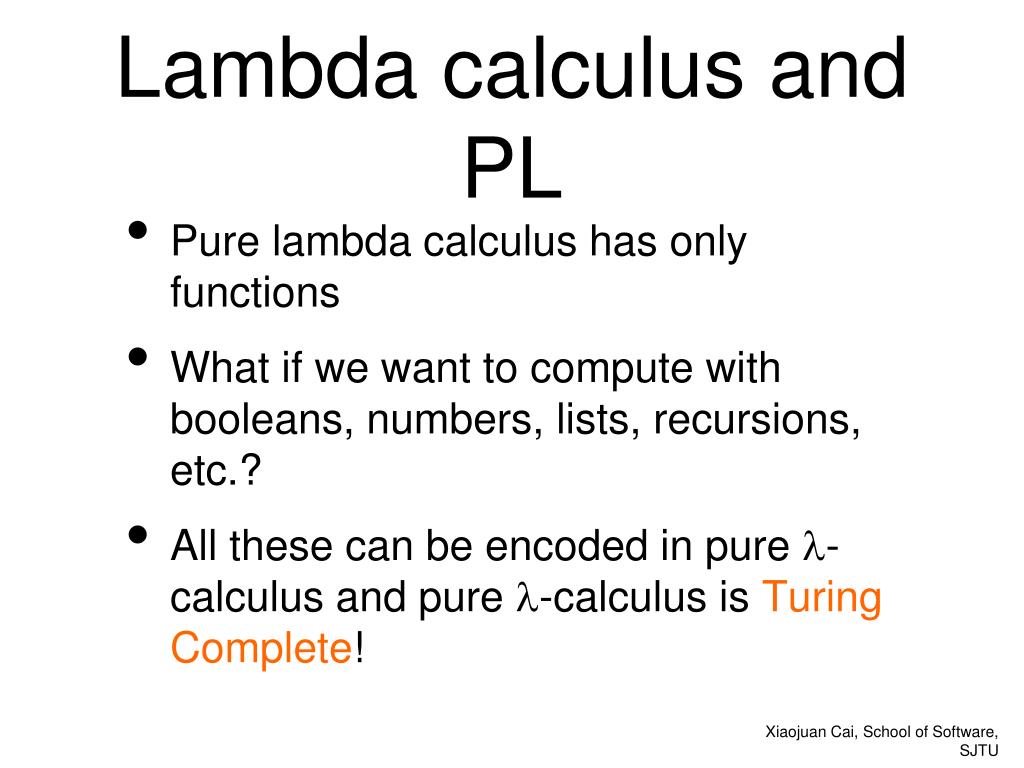

Typed lambda calculus plus#
This definition of plus is wrong, because m wants a function of type A →A, but scc doesn’t have that type! The definition in the book works: plus ≡ λm:CN A. If you want to iterate a function of another type, then you must define a new set of Church numerals for that type.īut this seemingly minor trouble will become a big one. A seemingly minor trouble is that if you want to use Church numerals to iterate a function, you can only do this for functions of type A →A. zĪnd so on, so that each has type (A →A) →A →A.

If we assume some type A, we can define them as: c 0 ≡ λs:A →A. No numbersĪnother casualty of adding types is Church numerals. That’s not true for Turing machines (the halting problem is undecidable), so there must still be a computable function that is not definable in λ→ with fix. With a fixed-point combinator, not every term halts, but it remains decidable whether a given term halts. There are various ways of adding it back in, including:īut even adding the fixed-point combinator still isn’t enough to restore Turing completeness. No fixed-point combinator can be defined in the simply-typed lambda calculus (because the fixed-point combinator could be used to write a non-halting term, and that would contradict normalization). There are two things missing that keep it from being Turing complete, described below. One consequence of this is that the simply-typed lambda calculus is not Turing complete – there are some programs (even programs that always halt) that can’t be written in it. One important property is strong normalization (every term halts), whose proof is deferred to Chapter 12 (which you are not expected to read). Section 9.3 proves various properties of the simply-typed lambda-calculus leading up to type safety. Notice how the typing context is passed as an argument and the type is returned. The pseudocode for type checking looks like this: function typecheck(t, Γ) The way that they map onto an algorithm is that the typing contexts are computed top-down on the syntax tree (bottom-up on the proof tree), but the types are computed bottom-up on the syntax tree (top-down on the proof tree). The typing rules are similar in structure to big-step operational semantics, and typing contexts ( Γ) are similar to environments. In order for there to be any finite types, we need some base types (cf. Exercise 9.2.1). The initial definition of λ→ (p. 103) only has one syntax rule for types, namely T ::= T → T.

Thus a lambda term is valid if and only if it can be obtained by repeated application of these three rules.The simply-typed lambda calculus (λ→ for short) adds a type system to the untyped lambda calculus.


 0 kommentar(er)
0 kommentar(er)
